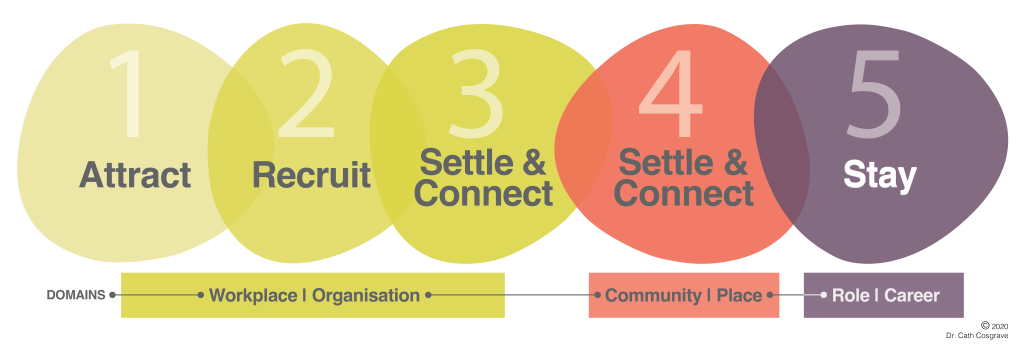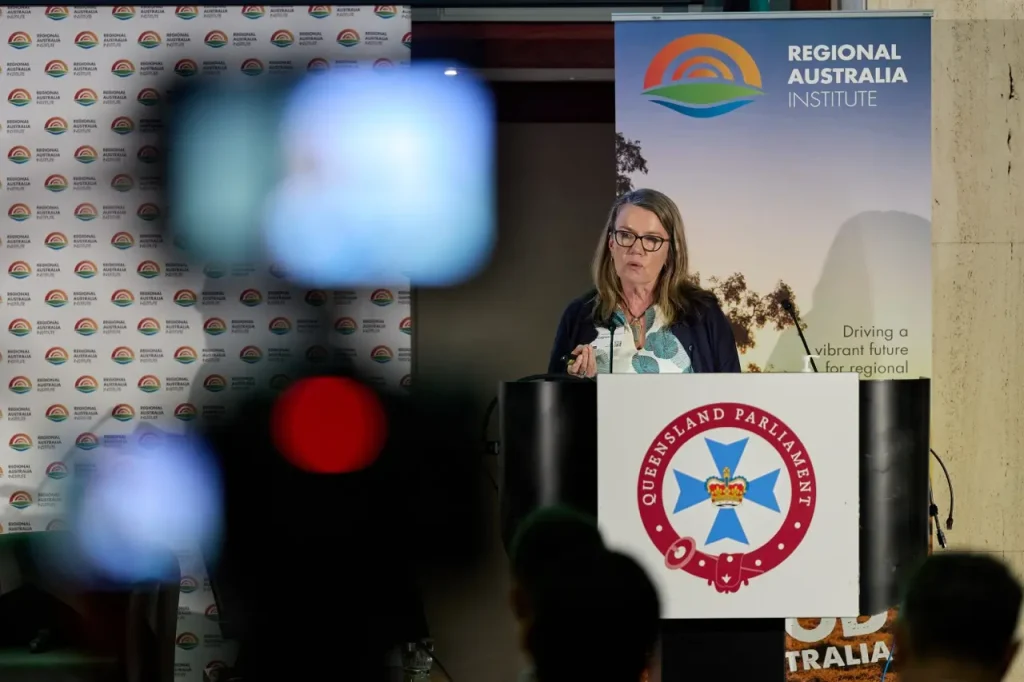In rural communities across Australia, the challenge of attracting and retaining healthcare professionals has reached crisis levels. When Melissa Hayes, CEO of Peel Health Care in Tamworth, NSW found herself facing what she describes as “the perfect storm” of GP shortages, she knew something had to change in their approach.
“We had a GP who enjoyed his semi-retirement so much he decided to take early retirement, and another GP who, for health reasons, needed a break from medicine,” Melissa explains. “At the same time, two of our regular GPs went off on maternity leave. To make matters worse, one of the departing doctors was a GP supervisor, which reduced our capacity to supervise GP registrars.”
Peel Health Care’s story is familiar to many rural and regional healthcare providers across Australia. It’s a scenario that Dr Cath Cosgrave, rural workforce researcher and creator of the Attract Connect Stay Framework, has seen play out countless times.

The Shift from Blanket Recruiting to Strategic Targeting
When Melissa enrolled in the Attract Connect Stay Launchpad program, she was practising what she calls a “blanket approach” to recruitment – putting out generic advertisements and hoping for the best. This approach had yielded diminishing returns as the healthcare workforce crisis deepened.
“The benefit I found from doing the (Attract Connect Stay) ideal candidate profile was being able to actually sit down and think about and target who it is that we want to recruit,” Melissa shares.
“Looking at what their stage of life is and what their stage of career is really helped us to focus and tailor all of our recruitment activities towards that.”
This targeted approach represents a fundamental shift from reactive to proactive recruitment – a core principle of the Attract Connect Stay Framework that has transformed recruitment efforts for organisations like Western District Health Service (WDHS) in the Southern Grampians, Vic. and Thrive Medical in Broken Hill, NSW.
Developing the Tools for Success
For Peel Health Care, implementing the Framework meant developing several critical components:
- A compelling employee value proposition: “We did a survey of the Peel Health Care team to get their thoughts around what makes us unique and attractive, and we’ve used that within our ads.”
- Comprehensive employer brand: “We looked at what we can offer people who want to come and work with us, both from a financial and a non-financial aspect.”
- Concrete relocation support: “We looked at what relocation support we can provide to attract people to come and live and work in Tamworth because we know the workforce isn’t here in Tamworth at the moment. We need to bring the workforce to Tamworth.”
- Community integration strategies: “Getting in touch with the Welcome Experience and really selling the work-life balance that they can get from living and working in an area like Tamworth.”
These elements parallel the successful approaches implemented by Thrive Medical, whose CEO Heather Pearce noted: “Having systems and processes in place means you’re ready when the right candidates come along.”
From Theory to Practice: Early Signs of Success
While Melissa acknowledges that recruiting GPs is a long game, she’s already seeing positive indicators that their new approach is working:
“We’ve made a couple of offers to overseas [doctors], which is good,” she shares.
“Having these tools in place has definitely helped me and made me feel more comfortable and confident about what we’re offering.”
Like Thrive Medical, which successfully recruited two permanent doctors and gained RACGP accreditation to supervise registrars, Peel Health Care is laying the groundwork for sustainable workforce solutions.
“I’m feeling more confident,” Melissa says.
“We still haven’t got the doctors in place yet, but I’m more positive about it. We’re having conversations, we’re making offers, people are nibbling, so eventually one’s going to jump on the hook.”
Beyond Recruitment: Building a Sustainable Workforce
The Attract Connect Stay Framework isn’t just about filling immediate vacancies – it’s about creating sustainable workforce solutions. For Melissa, this has meant thinking more holistically about career pathways within her organisation:
“It’s helped with thinking about our whole medical workforce and how best to structure a career pathway within that,” she explains. “Looking forward, I’d like to look at nurses and allied health as well, particularly psychologists.”
This approach mirrors WDHS’s comprehensive strategy, which focused not just on recruitment but on enhancing onboarding processes and establishing a Community Connector Program to help new staff and their families integrate into the community.
Making It Happen: The Implementation Journey
For busy healthcare leaders, finding time to implement new strategies can be challenging. The Attract Connect Stay Launchpad program is structured with this reality in mind, featuring a strategic one-month break after the first three (of five) pillars are taught. This break allows participants to catch up on critical groundwork—researching their employee value proposition, discussing and agreeing on incentives, and completing other foundational tasks.
Melissa utilised both this structured break and the holiday period between Christmas and New Year to focus deeply on implementation:
“It gave me time. I said, ‘right, that’s my period. I’m going to sit down and really dive into this,'” she recalls. “If I had my time again, I’d allocate two to three hours a week, maybe Friday afternoon when it’s a bit quieter, to focus on it.”
The program’s design recognises that the first two pillars especially require participants to conduct internal research, have conversations with stakeholders, and make important decisions about their approach—all of which take time to do properly.
The Value Proposition for Rural Healthcare Organisations
For rural healthcare organisations and other rural businesses facing similar challenges, Melissa identifies three compelling reasons to participate in the Attract Connect Stay Launchpad program:
- Cost-effectiveness: “It didn’t take up a huge amount of time realistically.”
- Evidence-based solutions: “It was evidence-based solutions and ideas… being able to utilise that research to look at what we need to target.”
- Skills development rather than outsourcing: “You can pay people a lot of money to come in and do all of this for you. But next time you need to go out and recruit, you’ve got to go back out and do that. Where you’re actually teaching us the skills and the how-to, which we can reuse.”
As Melissa points out, this final aspect is perhaps the most valuable.
“We’re trying to focus on the positives… I’m more confident. You know, we still haven’t got the doctors in place yet, but I’m more positive about it.”
Looking Ahead
For Peel Health Care, working together with me to implement the Attract Connect Stay Framework has been a journey of transformation – moving from a reactive, scattergun approach to recruitment toward a strategic, targeted model that considers the whole person.
Much like Thrive Medical, which achieved financial sustainability through strategic changes, and WDHS, which successfully reduced job vacancies through refined recruitment strategies, Peel Health Care is building the foundations for long-term workforce stability.
“Every day we’re a day closer,” Melissa tells her team. And with the right framework in place, that day may be closer than they think.
Ready to transform your rural workforce strategy? Join the Attract Connect Stay Launchpad program (Done Together with Dr Cosgrave) starting May 21st to August 13th 2025 (four week break in July) , and access the tools and support you need to succeed. Contact us today to learn more.







